#cloudintegration
Explore tagged Tumblr posts
Text
Cloud Migration and Integration A Strategic Shift Toward Scalable Infrastructure
In today’s digital-first business environment, cloud computing is no longer just a technology trend—it’s a foundational element of enterprise strategy. As organizations seek greater agility, scalability, and cost-efficiency, cloud migration and integration have emerged as critical initiatives. However, transitioning to the cloud is far from a lift-and-shift process; it requires thoughtful planning, seamless integration, and a clear understanding of long-term business objectives.

What is Cloud Migration and Why Does It Matter
Cloud migration involves moving data, applications, and IT processes from on-premises infrastructure or legacy systems to cloud-based environments. These environments can be public, private, or hybrid, depending on the organization’s needs. While the move offers benefits such as cost reduction, improved performance, and on-demand scalability, the true value lies in enabling innovation through flexible technology infrastructure.
But migration is only the first step. Cloud integration—the process of configuring applications and systems to work cohesively within the cloud—is equally essential. Without integration, businesses may face operational silos, inconsistent data flows, and reduced productivity, undermining the very purpose of migration.
Key Considerations in Cloud Migration
A successful cloud migration depends on more than just transferring workloads. It involves analyzing current infrastructure, defining the desired end state, and selecting the right cloud model and service providers. Critical factors include:
Application suitability: Not all applications are cloud-ready. Some legacy systems may need reengineering or replacement.
Data governance: Moving sensitive data to the cloud demands a strong focus on compliance, encryption, and access controls.
Downtime management: Minimizing disruption during the migration process is essential for business continuity.
Security architecture: Ensuring that cloud environments are resilient against threats is a non-negotiable part of migration planning.
Integration for a Unified Ecosystem
Once in the cloud, seamless integration becomes the linchpin for realizing operational efficiency. Organizations must ensure that their applications, databases, and platforms communicate efficiently in real time. This includes integrating APIs, aligning with enterprise resource planning (ERP) systems, and enabling data exchange across multiple cloud platforms.
Hybrid and Multi-Cloud Strategies
Cloud strategies have evolved beyond single-provider solutions. Many organizations now adopt hybrid (combining on-premise and cloud infrastructure) or multi-cloud (using services from multiple cloud providers) approaches. While this enhances flexibility and avoids vendor lock-in, it adds complexity to integration and governance.
To address this, organizations need a unified approach to infrastructure orchestration, monitoring, and automation. Strong integration frameworks and middleware platforms become essential in stitching together a cohesive IT ecosystem.
Long-Term Value of Cloud Transformation
Cloud migration and integration are not one-time projects—they are ongoing transformations. As business needs evolve, cloud infrastructure must adapt through continuous optimization, cost management, and performance tuning.
Moreover, integrated cloud environments serve as the foundation for emerging technologies like artificial intelligence, data analytics, and Internet of Things (IoT), enabling businesses to innovate faster and more efficiently.
By treating cloud migration and integration as strategic investments rather than tactical moves, organizations position themselves to stay competitive, agile, and future-ready.
#CloudMigration#CloudIntegration#DigitalTransformation#HybridCloud#MultiCloud#CloudComputing#InfrastructureModernization#ITStrategy#BusinessContinuity
2 notes
·
View notes
Text

Seamless Firmware Updates via Cloud-Connected Bluetooth Mesh Network
This visual represents the integration of cloud-based firmware updates with a robust Bluetooth Mesh network. The cloud securely delivers the latest firmware packages to all interconnected devices within the mesh network, ensuring reliable and synchronized updates. This approach enhances device performance, scalability, and connectivity while maintaining the efficiency of the network.
#BluetoothMesh#IoT#FirmwareUpdates#CloudIntegration#MeshNetwork#SmartConnectivity#OverTheAirUpdates#IoTTechnology#ScalableNetworks#IoTSolutions#SmartAutomation
1 note
·
View note
Text
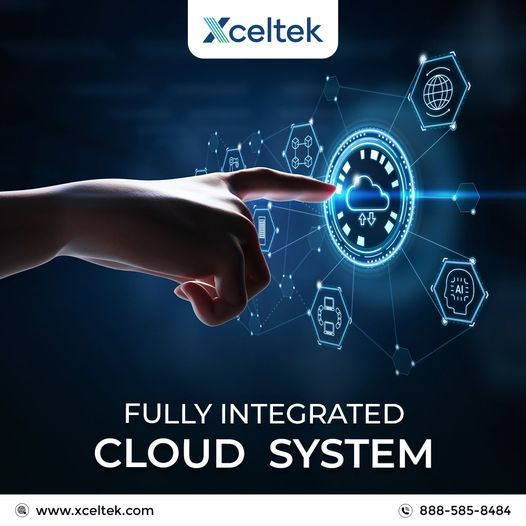
Will your Cloud System integrate with other software? 💻 For a smooth transition to the cloud, make sure your technology communicates properly with your system. Xceltek can help you take your practice to the cloud. For more details, please contact us. 📞 +1 888-585-8484 🌐 www.xceltek.com 📧 [email protected]
1 note
·
View note
Text
Unveiling Groundbreaking Advancements for SAP Integration with Microsoft Cloud
Businesses today are navigating a rapidly evolving digital landscape, seeking solutions that streamline operations and drive innovation. The seamless integration of SAP on Microsoft Cloud has emerged as a game-changer, empowering organizations to harness cutting-edge technology for enhanced efficiency and growth. This powerful combination delivers unparalleled scalability, security, and flexibility, enabling companies to stay ahead in a competitive market. Below, we explore the latest advancements in this transformative partnership, designed to propel enterprises toward a future-ready digital ecosystem.
Why SAP and Microsoft Cloud Are a Perfect Match
The synergy between SAP’s robust enterprise resource planning (ERP) capabilities and Microsoft’s cloud infrastructure creates a foundation for modern business success. By leveraging SAP on Microsoft Cloud, organizations gain access to a unified platform that supports real-time data processing, advanced analytics, and seamless collaboration. This integration eliminates silos, enhances decision-making, and accelerates digital transformation.
Scalability for Growing Enterprises
One of the standout benefits of this partnership is its ability to scale effortlessly. Whether a small business or a global corporation, companies can adjust resources dynamically to meet fluctuating demands. Microsoft’s Azure cloud ensures that SAP applications run smoothly, even during peak workloads, providing a reliable backbone for growth.
Enhanced Security and Compliance
Security remains a top priority for enterprises adopting cloud solutions. Microsoft Cloud offers advanced security features, including AI-driven threat detection and robust encryption, to safeguard sensitive SAP data. Additionally, compliance with global regulations, such as GDPR and HIPAA, is streamlined, giving businesses peace of mind.
New Features Driving Innovation
Recent updates to SAP on Microsoft Cloud introduce a host of innovative tools designed to optimize performance and user experience. These advancements reflect a commitment to empowering organizations with technology that adapts to their unique needs.
Intelligent Automation with AI
Artificial intelligence is at the heart of the latest enhancements. By integrating AI-driven automation into SAP workflows, businesses can reduce manual tasks, improve accuracy, and boost productivity. For example, predictive analytics within SAP modules can forecast inventory needs, enabling proactive decision-making.
Seamless Integration with Microsoft 365
Collaboration is key in today’s hybrid work environment. The deepened integration between SAP and Microsoft 365 allows teams to access SAP data directly within tools like Teams and Excel. This fosters real-time collaboration, reduces context-switching, and enhances overall efficiency.
Low-Code Development for Customization
Empowering non-technical users to innovate is a priority. The introduction of low-code platforms within SAP on Microsoft Cloud enables businesses to create custom applications without extensive coding expertise. This democratizes innovation, allowing teams to tailor solutions to specific challenges quickly.
Real-World Impact of SAP on Microsoft Cloud
Organizations across industries are already reaping the benefits of this powerful integration. From manufacturing to retail, companies are leveraging SAP on Microsoft Cloud to transform their operations and deliver exceptional customer experiences.
Case Study: Manufacturing Efficiency
A global manufacturer recently migrated its SAP environment to Microsoft Cloud, resulting in a 30% reduction in operational costs. By utilizing real-time data analytics, the company optimized its supply chain, minimized downtime, and improved product delivery timelines.
Case Study: Retail Agility
A leading retailer adopted SAP on Microsoft Cloud to enhance its e-commerce platform. The integration enabled dynamic pricing adjustments based on market trends, leading to a 15% increase in online sales. Additionally, the retailer improved customer satisfaction by streamlining order fulfillment processes.
How to Get Started with SAP on Microsoft Cloud
Transitioning to SAP on Microsoft Cloud is a strategic move that requires careful planning. Fortunately, Microsoft and SAP offer comprehensive support to ensure a smooth migration and implementation process.
Step 1: Assess Your Needs
Begin by evaluating your current SAP environment and business objectives. Identify areas where cloud integration can add value, such as cost savings, scalability, or enhanced analytics.
Step 2: Partner with Experts
Collaborate with certified Microsoft and SAP consultants to design a tailored migration strategy. These experts can guide you through technical requirements, ensuring minimal disruption to operations.
Step 3: Leverage Training Resources
To maximize the benefits of SAP on Microsoft Cloud, invest in training for your team. Microsoft offers extensive learning resources, including tutorials and certifications, to help users master the platform.
The Future of SAP and Microsoft Cloud Collaboration
The partnership between SAP and Microsoft continues to evolve, with a shared vision of empowering businesses through innovation. Upcoming developments are expected to focus on deeper AI integration, expanded IoT capabilities, and enhanced sustainability features to support eco-conscious operations.
Sustainability at the Core
Both SAP and Microsoft are committed to sustainability. Future updates to SAP on Microsoft Cloud will include tools to monitor and reduce carbon footprints, helping businesses align with environmental goals while maintaining profitability.
Expanding Global Reach
As more organizations embrace cloud technology, the global availability of SAP on Microsoft Cloud will expand. New data centers and localized support will ensure that businesses in emerging markets can access these cutting-edge solutions.
Conclusion: Embrace the Power of SAP on Microsoft Cloud
The latest advancements in SAP on Microsoft Cloud offer businesses an unprecedented opportunity to transform their operations. From intelligent automation to seamless collaboration, this integration delivers the tools needed to thrive in a digital-first world. By adopting this powerful platform, organizations can unlock new levels of efficiency, agility, and innovation, positioning themselves for long-term success.
#SAPIntegration#MicrosoftCloud#AzureSAP#CloudIntegration#DigitalTransformation#EnterpriseIT#HybridCloud#Innovation#TechAdvancements#FutureofERP
0 notes
Text
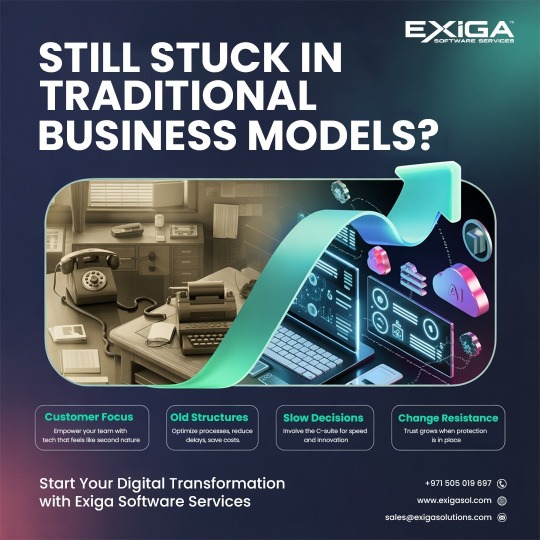
Upgrade your business with Exiga’s digital transformation solutions!
Drive growth, boost efficiency, and stay competitive—smarter, faster, better. The future is now.
Partner with us to unlock your potential. 🌐 www.exigasol.com | 📞 +971 505 019 697
#digitaltransformation#sapexperts#innovationunleashed#itinnovation#enterprisesolutions#cloudintegration#techleadership#exigaservices#sap#itservices#itconsulting#artificialintelligence#technologies
0 notes
Text
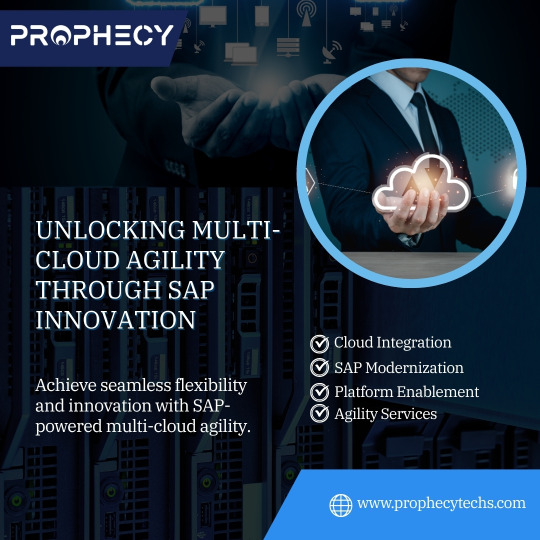
#SAPInnovation#MultiCloudAgility#CloudIntegration#SAPModernization#PlatformEnablement#AgilityServices#DigitalTransformation#EnterpriseIT#CloudStrategy#ProphecyTech#TechSolutions#SmartEnterprise#CloudModernization#ITConsulting#FutureReady
0 notes
Text

📢 Free Online Training New Batch – Don’t Miss It! 🚀📘 Course: Informatica Cloud (CAI + CDI)👨🏫 Trainer: Mr. Arun (10+ Years Industry Expert)📅 Date: 22nd July 2025 ⏰ Time: 8:00 AM IST
🔗 Join Here: https://meet.goto.com/677657869
💡 What You'll Learn:🔹 Real-time Use Cases with CAI + CDI🔹 Cloud Data Integration Scenarios🔹 Step-by-Step Project Implementation🔹 Career Roadmap & Certification Guidance
💬 WhatsApp: https://wa.me/c/91703229054📝 Visit Blog: https://visualpathblogs.com/category/informatica-cloud/ 🌐 Visit: https://www.visualpath.in/informatica-cloud-training-in-hyderabad.html
#InformaticaCloudTraining#InformaticaCAICDI#CloudIntegration#DataIntegration#ETLTraining#InformaticaIICS#OnlineTraining#FreeDemo#CareerInTech#Visualpath#RealTimeIntegration#ETL#ITSkills#CloudETL#LearnInformatica#informatica#etldeveloper#newtechnology#cloudcomputing#clouds#software#education#CDI#informaticacloud#upskill#IT#ITProfessionals#freshers
0 notes
Text
Top 5 Best Data Integration Tools and Software in 2025
With the vast amount of data pouring in from several sources, data integration—combining and harmonizing information from various sources, formats, or systems into a single unified source of truth—plays an essential role in helping businesses gain valuable insights and make informed decisions.
Finding an effective way to integrate data has become a critical concern for most firms, and as a result, many are increasingly using data integration tools to automate the process because doing it by hand is very time-consuming and prone to errors.
However, figuring out where to begin and which data integration and transformation technology best fits your business objectives can be overwhelming due to the vast diversity of options accessible.
Don't worry! Everything you need to know about data integration tools, the most important factors to consider when choosing the best tool for your company, and the top 5 data integration tools available in 2025 will all be covered in this blog.
What is Data Integration Tool?
QKS Group defines data integration tools as the means for organizations to consolidate data from various sources into a unified repository, offering a comprehensive perspective. These tools guarantee consistent access, availability, and data delivery across the enterprise, leading to actionable business insights. They execute critical functions like data management, extraction, transformation, and loading to streamline data integration processes. The adaptability of data integration tools spans applications such as analyzing customer preferences, fostering interdepartmental collaboration, expediting project timelines, and facilitating real-time applications.
How do Data Integration Tools Work?
Modern data integration platforms have a user-friendly interface that simplifies the complete integration process. Drag-and-drop interfaces allow users to create fully automated data pipelines without coding.
This is a detailed explanation of how typical software integration tools operate:
Data extraction: These solutions have adapters or connectors that easily connect to several data sources, including files, databases, cloud apps, and APIs. Users can set up relations and drag needed data without writing queries or code.
Data transformation: Following extraction, users can modify and improve the data quality using built-in transformation tools. Data transformations include joining, normalizing, and merging. After loading data into the destination (ELT), some projects carry out transformations, which modern tools support.
Data mapping: Data mapping is facilitated by the graphical user interface of data integration tools, which enables users to match data pieces from various sources to the appropriate fields in the target data model. This ensures proper integration and relationships between data from several sources.
Data loading and integration: The utility inserts the data into the intended location after it has been converted and mapped. The majority of programs enable a variety of loading techniques, including real-time data streaming and batch processing.
Data validation: Many tools include data validation features to verify the accuracy and completeness of the integrated data. Users can set up validation rules to ensure the data meets specific criteria or company rules.
Factors to Consider When Choosing a Data Integration Tool
Choosing the correct data integration tool is a bit like finding the perfect pair of shoes— it should fit well, facilitate your everyday tasks, and (hopefully) give you the confidence to overcome your data obstacles. That's easier said than done, though, with so many alternatives available.
The best tool isn’t always the one with the most features or the highest price. To find the right fit for your company, review Market Share: Data Integration Tools, 2023, Worldwide and Market Forecast: Data Integration Tools, 2024-2028, Worldwide reports from QKS Group. These reports provide real market insights, helping you choose a solution that aligns with your business needs, technical capabilities, and budget.
It is simple to become overwhelmed by the noise and succumb to the paralysis-by-analysis trap. Take a moment to ignore everything else and concentrate on the following aspects:
Connectivity and Compatibility
Scalability and Performance
Ease of Use and Technical Requirements
Data Transformation Capabilities
Security and Compliance
Top Data Integration Tool
There are several data integration tools available, but they differ slightly in terms of their unique functions. Here are some of the top data integration tools:
Fivetran
Fivetran helps businesses boost AI and ML workloads to spur innovation and accelerate cloud migration. Whether installed on-premises, in the cloud, or a hybrid environment, the Fivetran platform centralizes data from hundreds of SaaS apps and databases dependably and safely.
IBM
IBM is a reputable company that specializes in technology and innovation. Through targeted innovations and consulting services, the main goal is to promote technical advancement and improve infrastructure. It is designed to help transform theoretical concepts into real-world applications, enhancing global functionality while encouraging creativity and innovation.
Informatica
Informatica is a firm specializing in Enterprise Cloud Data Management, which aims to allow companies to utilize their most significant assets. The company uses AI to manage data across multi-cloud, hybrid systems and has created a new product category called the Informatica Intelligent Data Management Cloud (IDMC). By democratizing data, this invention provides cutting-edge, contemporary business tactics. The organization, which has a global presence, is committed to advancing data-driven digital transformation.
Oracle
Oracle is a multinational provider of software and computer infrastructure for cloud computing. To assist with data management and security, this group has created the first autonomous database of its kind. Workloads may be moved more easily across clouds and from on-site systems to the cloud thanks to features offered by Oracle Cloud Infrastructure. Oracle's cloud software programs offer cutting-edge resources designed to promote resilience and sustainable corporate growth.
Qlik
Following Talend's integration, Qlik concentrates on analytics, information quality, and data integration. Its vast cloud platform automates data-based activities, combines data from several cloud and hybrid settings, and uses artificial intelligence to enhance comprehension. Making data easily accessible and usable for improved, effective business outcomes is Qlik's key goal. It reaches out to a broad base of users in numerous countries, aiming to provide potent data solutions for changing organizational requirements.
Benefits of Using Data Integration Tools
Some of the benefits of using data integration tools are:
They assist companies in consolidating information from several sources into a single repository. This enables companies to see all of their data and make better choices.
Businesses may enhance the quality of their data with the help of data integration tools. Businesses may ensure they are utilizing correct and current information by standardizing and cleaning data.
Many data integration tools have many different characteristics. This enables companies to select the best tool for their unique requirements.
Businesses can automate the extraction, transformation, and loading of data using data integration tools. This approach saves significant time and effort compared to manual data entry.
You can use data integration tools to monitor and analyze your data. You may use this to spot patterns and improve your decision-making.
Conclusion
Any contemporary organization must have easy access to reliable data that is effectively connected, that's why purchasing the appropriate data integration solution is essential. Nonetheless, the idea of data integration encompasses a variety of distinct procedures. Various data integration solutions can concentrate on different aspects of that process and be geared toward resolving specific issues that teams or companies are facing. As such, decision-makers need to carefully weigh up the needs of their teams and the wider business to find the best solution for them.
0 notes
Text

Top 5 Best Data Integration Tools and Software in 2025
0 notes
Text
#SCADA#IndustrialAutomation#ProcessControl#SmartInfrastructure#MarketForecast#CloudIntegration#Cybersecurity#IIoT#SmartManufacturing#EnergyManagement
0 notes
Text
#MilestoneSystems#XProtect#Arcules#VehicleAnalytics#VideoSecurity#CloudIntegration#AI #SmartCities#powerelectronis#powermanagement#powersemiconductor
0 notes
Text
Elevate Your Digital Presence with Cloudking Technical – Trusted Tech Solutions
Cloudking Technical is your go-to partner for robust IT and digital marketing solutions. From SEO and web development to cloud integration and technical support, we help businesses scale with cutting-edge technology. Whether you're a startup or an enterprise, our experts provide customized strategies to enhance performance and visibility. Explore our services and experience growth backed by innovation.
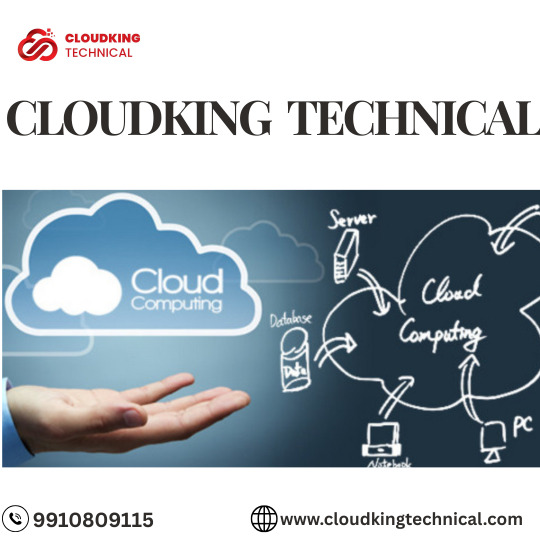
0 notes
Text
Turn Web Services into Powerhouses ⚙️🌐
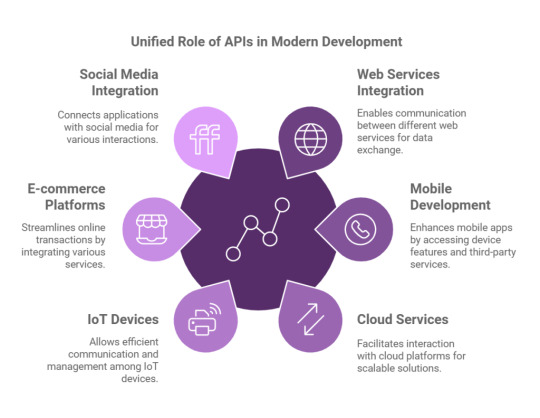
Integrate APIs, mobile apps & cloud tools into one unified experience. Seamless performance starts here.
#WebServicesIntegration#AppBackend#APIDesign#PlatformOptimization#TechFlow#MobileReady#CloudIntegration#DigitalFramework#EfficiencyMatters
0 notes
Text
Digital Voice Recorder Market Growth Driven by Advances in AI-Powered Transcription and Cloud Integration
Introduction
The Digital Voice Recorder Market is witnessing significant growth fueled by technological innovations such as AI-powered transcription and cloud integration. These developments have enhanced the usability, efficiency, and versatility of voice recording devices, making them indispensable across multiple sectors. This article explores the key factors driving this market expansion, technological trends, and future growth prospects.

Market Overview
Digital voice recorders have long been essential tools in industries such as media, legal, education, and healthcare. They allow users to capture and store audio efficiently for documentation, transcription, or playback purposes. However, the traditional functionality of simply recording voice is evolving. Integrating AI and cloud technologies is now redefining the entire market landscape by enabling smart, automated transcription and seamless data accessibility.
Advances in AI-Powered Transcription
One of the most transformative factors propelling the Digital Voice Recorder Market is the integration of Artificial Intelligence (AI) into transcription services. AI algorithms can now transcribe recorded speech in real-time with remarkable accuracy. Unlike earlier manual transcription processes, which were time-consuming and prone to errors, AI-powered transcription saves time and increases productivity.
Benefits of AI Transcription
Enhanced Accuracy: Modern AI transcription tools use natural language processing (NLP) to understand context, reducing misinterpretations.
Multilingual Support: AI transcription supports multiple languages and dialects, expanding usability across global markets.
Voice-to-Text Conversion: Instant conversion of voice recordings into editable text allows users to quickly review, edit, or share content.
Speaker Identification: AI systems can distinguish between different speakers, adding clarity to multi-person recordings.
These features make digital voice recorders highly attractive for journalists, legal professionals, educators, and corporate users who rely on accurate and fast transcription for their workflows.
Role of Cloud Integration
Cloud integration is another major driver for the growth of the Digital Voice Recorder Market. Cloud platforms allow recorded files and their transcriptions to be uploaded, stored, and accessed remotely from any device, enhancing collaboration and convenience.
Key Advantages of Cloud-Enabled Digital Voice Recorders
Remote Accessibility: Users can access their recordings anytime and anywhere, facilitating remote work and global collaboration.
Data Security and Backup: Cloud storage ensures that recordings are safely backed up, minimizing the risk of data loss.
Storage Scalability: Unlike traditional recorders with limited memory, cloud storage provides virtually unlimited capacity.
Real-Time Sharing: Cloud platforms enable instant sharing of recordings with colleagues or clients for faster decision-making.
The fusion of voice recording technology with cloud computing is especially beneficial for businesses aiming to streamline communication and documentation processes.
Market Impacting Factors
Several factors influence the rapid adoption and expansion of digital voice recorders enhanced by AI and cloud integration:
Rising Demand in Corporate and Legal Sectors
The corporate sector increasingly relies on accurate record-keeping of meetings, interviews, and brainstorming sessions. Legal professionals utilize digital voice recorders for depositions, court proceedings, and client meetings, requiring precise transcription for case documentation.
Increasing Content Creation and Media Production
The surge in content creation, including podcasts, vlogging, and journalism, has created a strong demand for portable and reliable voice recording solutions that incorporate advanced transcription capabilities.
Growing Adoption in Education and Healthcare
Educators use digital recorders to capture lectures and discussions, aiding students in note-taking and review. Healthcare providers leverage these tools for patient interviews and documentation, improving record accuracy and reducing administrative burdens.
Technological Innovation and Product Launches
Continuous innovation in AI models and cloud infrastructure encourages manufacturers to launch smarter and more efficient digital voice recorders, which attract new user segments and applications.
Challenges and Market Restraints
Despite robust growth, the Digital Voice Recorder Market faces some challenges:
Privacy Concerns: Recording and storing sensitive data on the cloud raises security and privacy issues that require stringent regulatory compliance.
Cost of Advanced Devices: AI-powered recorders integrated with cloud services may be costlier, limiting adoption in price-sensitive markets.
Language and Accent Limitations: Though AI transcription has improved, dialects and heavy accents can still affect accuracy, posing challenges in some regions.
Addressing these challenges is crucial for sustained market expansion.
Future Outlook and Opportunities
The future of the Digital Voice Recorder Market appears promising with ongoing advancements:
Integration with Other Technologies: Combining voice recording with IoT devices, virtual assistants, and CRM software could create new functionalities and value propositions.
Improved AI Models: Enhanced AI transcription models will reduce errors further and provide support for more languages and accents.
Customization and Personalization: Future devices may offer tailored features for specific industries, such as legal or medical, enhancing usability.
Expansion in Emerging Markets: Increased smartphone penetration and digital transformation initiatives in developing countries present untapped opportunities.
Manufacturers and service providers investing in research and development are expected to capitalize on these trends to gain competitive advantage.
Conclusion
The Digital Voice Recorder Market is undergoing a dynamic transformation driven by AI-powered transcription and cloud integration. These technologies have made voice recorders smarter, more efficient, and highly adaptable to diverse industry needs. Despite some challenges, the market outlook remains positive, supported by rising demand across multiple sectors and continuous innovation. Businesses and consumers alike stand to benefit from the enhanced capabilities of digital voice recorders, marking a new era of voice recording and transcription solutions.
#DigitalVoiceRecorder#AITranscription#CloudIntegration#VoiceRecording#TechInnovation#MarketGrowth#DigitalTransformation#VoiceTech#SmartRecording#FutureOfWork
0 notes
Text
#IndustrialCloud#CloudPlatform#IIoT#SmartManufacturing#IndustrialAutomation#EdgeToCloud#CloudComputing#DigitalTransformation#Industry40#IndustrialIoT#CloudIntegration#DataDrivenIndustry#SmartFactory
0 notes
Text

Digital Transformation 2025: The Strategic Imperative for Sustainable Enterprise Leadership
Why Your Business Can’t Afford to Hit Snooze: 🚀 Products That Wow, Not Just Work Faster launches. Flawless quality. Turn customers into fans, not critics.
💰 Revenue Streams That Flow Like Rivers Unlock subscriptions, data monetization & hyper-personalization—profit from change, not just endure it.
📉 Costs That Shrink, Agility That Soars Automate waste. Pivot overnight. Trade rigid budgets for fluid momentum.
❤️ Customers Who Stay (and Advocate) Predict needs. Delight effortlessly. Experience isn’t a department—it’s your reputation.
Initiate Your Dominance Portfolio: 📞 +971 505 019 697 ✉️ [email protected] 🌐 www.exigasol.com
#digitaltransformation#sapexperts#innovationunleashed#itinnovation#enterprisesolutions#cloudintegration#techleadership#exigaservices#sap#itservices#itconsulting#artificialintelligence#technologies
0 notes